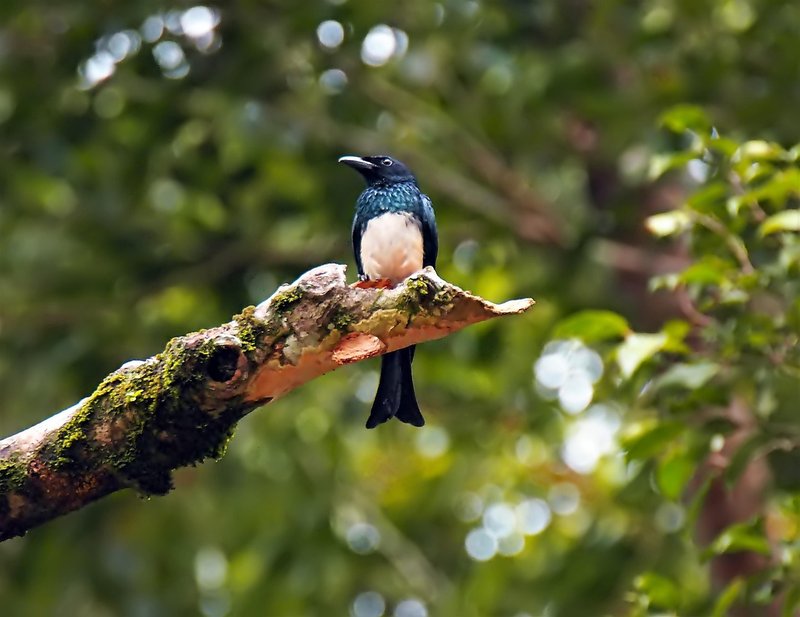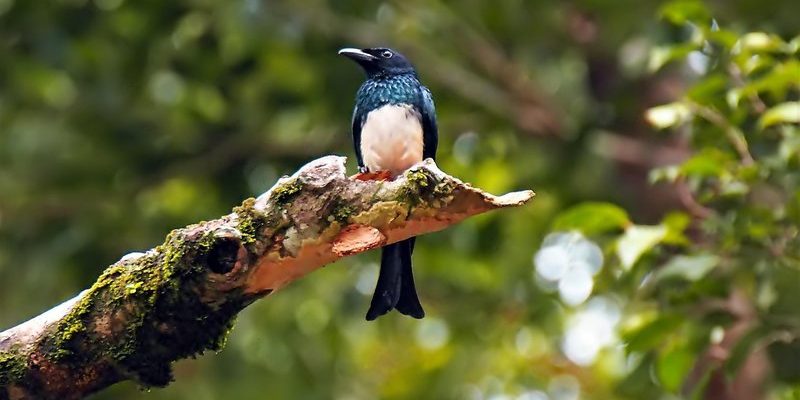
When you think about birds that stand out in the animal kingdom, the drongo might not be the first name that pops into your head. But these remarkable birds are full of surprises! Drongos are known for their intelligence and vocal abilities that can leave anyone who watches them in awe. Imagine a creature that can mimic sounds and even fool other animals! That’s the drongo for you.
Found primarily in Africa, Asia, and Australia, these birds come in various shapes and sizes, each with its unique twists. They’re not just pretty faces either; their behavior is as captivating as their appearance. So, if you’ve ever been curious about these clever creatures, sit back and let’s dive into the world of drongos together!
What is a Drongo?
Drongos belong to the family Dicruridae, which consists of around 20 species. Each species boasts its own characteristics, but they share some common features that make them instantly recognizable. For instance, many drongos have glossy black plumage, long forked tails, and a distinctive call. Their unique shape and behavior set them apart, making them a favored subject among birdwatchers.
One of the coolest things about drongos is their adaptability. They thrive in a variety of habitats, from open woodlands to dense tropical forests. You might spot them perched high up on a branch, scanning their surroundings. And don’t be surprised if you hear them mimic other birds or even animals! This mimicry isn’t just for show; it helps them communicate and deceive other creatures.
Physical Characteristics
Drongos vary in size, but most are medium-sized birds, measuring around 9 to 14 inches in length. They typically have sleek bodies, a long tail that can be deeply forked, and sharp, pointed wings. Their glossy feathers often shimmer in the sun, creating a striking visual appeal. The specific coloration and size can vary significantly depending on the species, with some displaying striking red or white marks.
What really makes a drongo stand out is its vocal range. The drongo’s voice is incredibly versatile, able to imitate alarms of other birds, the calls of mammals, and even mechanical noises. This mimicry not only helps them communicate but can also trick predators or rivals. Imagine a bird that can mimic the sounds of danger to scare others away—this level of intelligence is truly remarkable!
Habitat and Distribution
Drongos are quite versatile in their choice of habitat. You’ll find them in a variety of environments ranging from tropical rainforests and scrublands to savannas and urban areas. Their adaptability allows them to thrive in regions where food is plentiful and where they can find nesting sites. While they are predominantly found in Africa, they can also be spotted in parts of Asia and Australia.
In terms of distribution, different species of drongos occupy different regions. For example, the common drongo (Dicrurus adsimilis) is widespread across sub-Saharan Africa, while the black drongo (Dicrurus macrocercus) is found across the Indian subcontinent and parts of Southeast Asia. This geographical diversity is fascinating, as it shows how these birds have adapted to various climates and ecosystems.
Diet of Drongos
Drongos are primarily insectivores, which means their diet mainly consists of insects. They actively hunt for prey, using their sharp eyesight to spot insects in the air or on leaves. Their diet can include a wide range of insects like beetles, grasshoppers, and ants. In addition to insects, drongos are known to consume fruits and small vertebrates, such as lizards or nestling birds when the opportunity arises.
These birds are often seen performing acrobatic aerial maneuvers to catch their prey. They’ll dive and swoop through the air, showcasing their agility and speed. This dynamic hunting style not only makes them fascinating to watch but also highlights their role as effective pest controllers in their ecosystems.
Behavior and Social Structure
Drongos are social birds, often seen in pairs or small groups. Their interactions are lively, filled with vocalizations and physical displays that communicate their status and intentions. You might catch them displaying aggressive behavior when defending their territory or when trying to attract a mate. This social aspect of their lives creates a dynamic environment that can be both entertaining and educational for birdwatchers.
Notably, drongos are known for their “kleptoparasitic” behavior—essentially stealing food from other birds. They often follow larger birds like raptors or even crows, waiting for the perfect moment to swoop in and snag a meal. This cunning behavior showcases their intelligence and adaptability, allowing them to thrive even in competitive environments.
Reproduction and Nesting
During the breeding season, drongos engage in elaborate courtship displays. Males will often perform aerial acrobatics to impress potential mates. Once paired, drongos construct their nests, typically in tree branches or shrubs. These nests are often intricately built with twigs and leaves, providing a safe haven for their young.
The female drongo usually lays between 2 to 4 eggs, which are a pale blue color. Both parents take turns incubating the eggs and feeding the chicks once they hatch. The young drongos are altricial, meaning they are born helpless and require care from their parents until they’re ready to fledge. It’s a beautiful process that highlights the dedication of these birds to their offspring.
Conservation Status
Most drongo species are not currently endangered, thanks to their adaptability and wide distribution. They are quite common in many regions where they live. However, like many birds, they face threats from habitat loss and environmental changes. Deforestation, agricultural expansion, and urbanization can lead to diminishing habitats for drongos and other wildlife.
Conservation efforts are essential to ensure that these clever birds continue to thrive. Protecting their natural habitats and promoting biodiversity are crucial steps toward maintaining healthy ecosystems. Enjoying and observing drongos in their natural environments can also contribute to their conservation by raising awareness about the importance of preserving wildlife.
| Characteristic | Description |
| Size | 9 to 14 inches in length |
| Habitat | Tropical rainforests, savannas, urban areas |
| Diet | Insects, fruits, small vertebrates |
| Vocal Ability | Exceptional mimicry skills |
| Incubation Period | About 14 to 19 days |
| Conservation Status | Common, but faces habitat loss |
Drongos may not be the most famous birds in the world, but they certainly deserve our attention. Their intelligence, adaptability, and vibrant personalities make them a fascinating subject for anyone interested in wildlife. Whether you’re an avid birdwatcher or a casual nature lover, keeping an eye out for these clever birds can lead to unexpected moments of joy.
Next time you’re out in nature, take a moment to appreciate the drongo, and you might just find yourself mesmerized by its beauty and behavior. After all, these birds are not just part of the landscape; they play an essential role in their ecosystems and offer a glimpse into the wonders of the natural world.
FAQ
What is the lifespan of a drongo?
Drongos typically have a lifespan of about 5 to 10 years in the wild, although many factors such as predation and environmental conditions can impact their longevity. In captivity, where they are protected from predators and have a steady food supply, they might live longer. Understanding their lifespan helps appreciate the challenges they face in the wild.
Are drongos migratory birds?
Most drongos are not migratory. They tend to establish permanent territories in their chosen habitats, staying in the same area year-round. However, some species may move locally in response to seasonal changes in food availability or weather conditions. Their adaptability allows them to thrive in various environments without necessarily migrating long distances.
Do drongos mate for life?
Drongos generally form monogamous pairs during the breeding season, but they do not necessarily mate for life. Once the breeding season ends, some may find new partners. Their relationships are often built around mutual benefit, especially in raising their young together, showcasing a flexible approach to breeding.
How do drongos communicate?
Drongos are vocal birds, and they use a variety of calls and sounds to communicate. They can mimic the calls of other birds and animals, which can serve multiple purposes, from attracting mates to warning others of danger. Their ability to mimic sounds adds to their impressive communication skills and social dynamics.
What threats do drongos face?
Drongos face threats primarily from habitat loss due to deforestation, urbanization, and agricultural expansion. These changes can lead to reduced food sources and nesting habitats. Additionally, climate change poses a growing threat to many bird species, including drongos, as it can alter their habitats and food availability.
Can you keep a drongo as a pet?
Keeping a drongo as a pet is not advisable. They are wild birds and require specific habitats and diets to thrive. Additionally, many countries have laws protecting wildlife, making it illegal to keep certain species as pets. It’s best to appreciate drongos in their natural environments where they can express their natural behaviors.
What is the role of drongos in the ecosystem?
Drongos play an essential role in the ecosystem as insectivores. They help control insect populations, which can benefit both plant life and other animals. Their presence indicates a healthy environment, and they contribute to the balance of their ecosystems by interacting with various species and maintaining food web dynamics.

